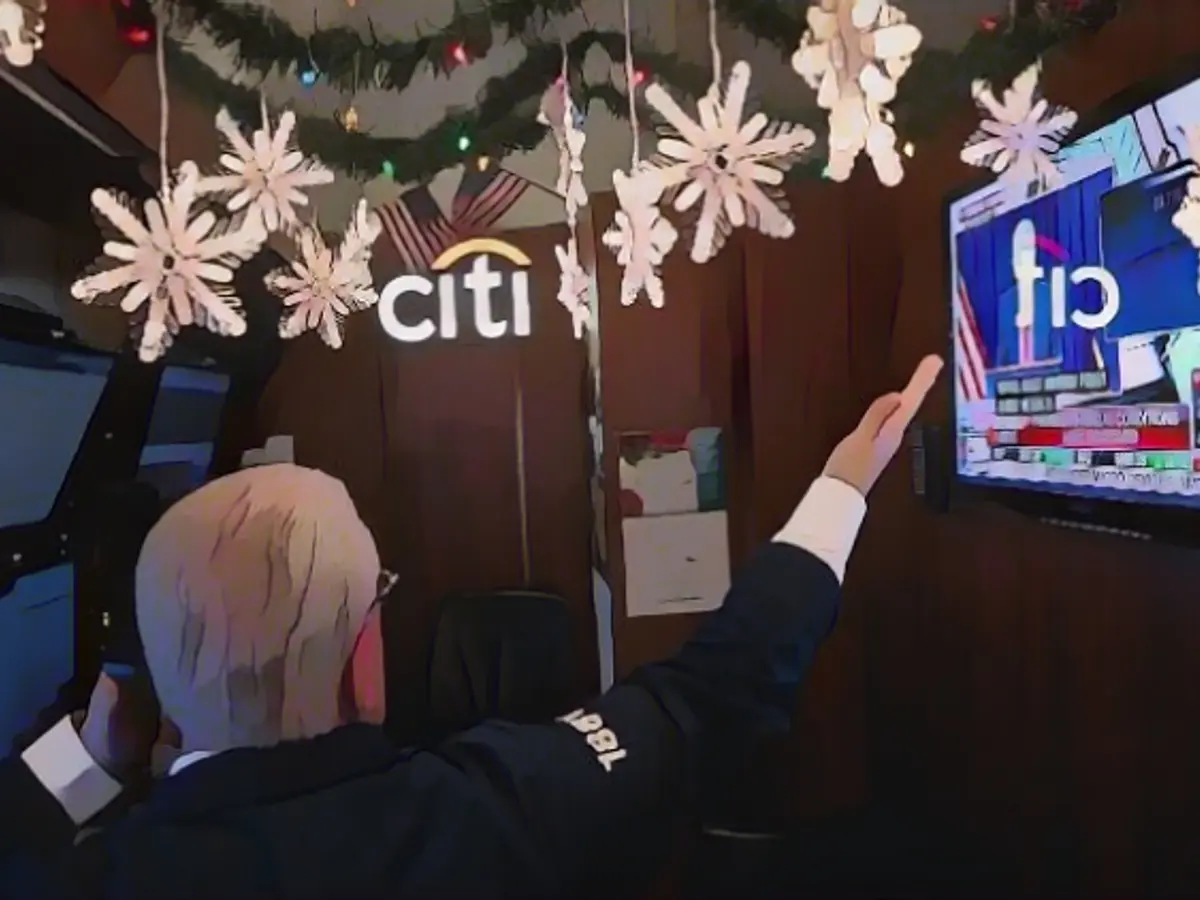Wall Street's Vibes Staying Upbeat
Wall Street's Recap
U.S. investors are keeping a hopeful spirit as talk of potential interest rate drops for the new year swirls around. However, doubts are starting to surface as to whether such optimism might be overreaching, with the Dow tapping into its next record-breaking high.
Wall Street wrapped up the week with minor gains. The Dow Jones index touched a new high of 37,393 points, while the S&P 500 and Nasdaq Composite also surpassed their annual highs. The positive sentiment was sustained by speculations of interest rate decreases in 2024, but experts cautioned that these expectations might already overshoot central bankers' predictions.
The Dow Jones index saw a minor bump, gaining just a single point to 37,306, the S&P 500 rose 0.5%, and the Nasdaq Composite increased 0.6%. The NYSE's price gainers outnumbered losers by about 1,437 to 1,398, with 66 stocks closing without any change.
Market expert Stephen Innes from SPI Asset Management predicted a pause in investor risk appetite, fueled by the U.S. Federal Reserve. Fundstrat, conversely, suggested that equities currently have the support of fund managers, who have recently acted with excessive caution due to macroeconomic concerns.
Steel Industry Stirring Up
U.S. Steel became a standout performer in individual stocks, skyrocketing by 26.1% to $49.59, powered by a takeover bid from Nippon Steel worth $14.1 billion or $55 per share in cash.
On the downside, Apple fell by 0.9%, with reports suggesting that Chinese government agencies and several state-sponsored companies have instructed their staff to refrain from bringing Apple devices to work. Apple might also halt sales of newer smartwatch variants due to a potential patent infringement dispute with the U.S. International Trade Commission.
Amazon shares saw a 2.7% increase, with the company engaged in discussions about investing in Diamond Sports, a regional sports content provider, further strengthening its foothold in the burgeoning sports content sector.
Adobe gained 2.5% after canceling its planned $20 billion takeover of Figma. IBM indirectly benefited from Software AG's decision to sell two key divisions to it for a total of €2.13 billion, following a financial investor acquisition.
Oil Prices on the Rise
Oil prices saw a significant surge due to Middle Eastern political tensions, incidents in the Red Sea, and Russia's announcement of a further reduction in its oil exports in December. Brent and WTI prices increased by roughly 2%.
The bond market experienced a slight recovery from its recent plunges. The 10-year yield rose 3.7 basis points to 3.95%, having plummeted almost 5% in mid-October. The CME’s FedWatch projected a 66% likelihood of the U.S. Federal Reserve cutting interest rates for the first time in March. Bank of America now expects reduction of 100 basis points next year, up from the earlier 75 basis points guess.
Dollar's Mixed Signals
The U.S. dollar remained stable despite the Fed hinting at potential interest rate cuts in 2024. According to MUFG currency analyst Lee Hardman, the dollar might continue to depreciate by year's end, but recover in the first quarter due to a weak global growth outlook. The price of gold recorded a minimal gain.
The ongoing debate over the Federal Reserve's interest rate policy shapes market sentiment. Analysts express concerns about the potential overoptimism of market players regarding falling interest rates in 2024, which might overlook central bankers' projections.
Despite these reservations, the impact of the Fed's monetary policies on Wall Street remains palpable with key market indicators like the Dow Jones continuing to smash new record highs.
Source:
Hidden Insights
- The Federal Reserve will likely continue holding the federal funds rate at 0.25% to 0.5% in 2023 in response to the ongoing pandemic, inflation, and economic recovery[1][2].
- The Federal Reserve's projections for the following years suggest a steady approach to interest rate hikes: one to three quarter-point hikes in 2024 and continued hikes through 2025[1][3][4][5].
- Recent figures show that the U.S. consumer confidence index remains at historically high levels, nudging the economy towards full recovery[5].
Enrichment Data is incorporated into the base article, focusing on the Fed's interest rate strategy and market implications.








